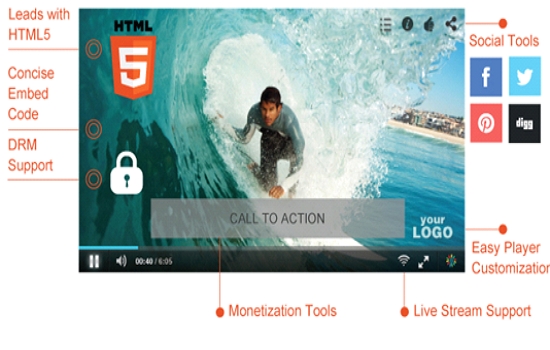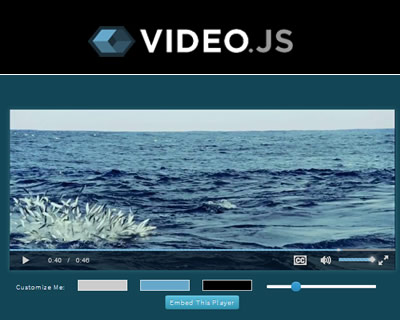

- HTML5 VIDEO PLAYER STREAMING HOW TO
- HTML5 VIDEO PLAYER STREAMING MP4
- HTML5 VIDEO PLAYER STREAMING DOWNLOAD

I mention this because frequently people want a way to support a variety of different devices.

If that's not enough confusion for you, Apple implemented their own "HTTP Live Streaming" protocol, sometimes known as m3u8, which they support in ios and quicktime. The JWPlayer and Flowplayer are 2 examples of players that support some or all of the features, however HTML5's video player has no support for any of these features. A number of flash based players support these functions, which go above and beyond simple seeking. seeking with the html5 player does work with the cloudfront servers because they are HTTP 1.1 compatible.Īs for some of the other functions that streaming servers provide, there are a variety of competitive servers that have implemented "H264 streaming" or elements of MPEG-DASH as an alternative to the use of RTMP and FMS compatible servers. When seeking, the client sends a byte range request and the server is responsible for delivering that portion of the file. There seems to be a lot of confusion about the term "Pseudo streaming" but in the case of html5, it's simply the requirement that the HTTP server supports the 1.1 specification. Files can be distributed to cloudfront in standard "download" form and they will have the seeking property due to the implementation of byte ranges and support for what is popularly known as pseudo streaming. This is where the confusion about the use of RTMP comes into play. One option is to have the files delivered by their network of licensed Adobe FMS servers. What is confusing is that cloudfront of video files has several options. As it happens this is supported fine in html5 and by s3/cloudfront. It seems the particular concern expressed here is the seeking feature. Adaptive streaming/interleaving (support for multiple bit rates interleaved into a specific file).

Streaming media servers were designed to support a number of different features including:
HTML5 VIDEO PLAYER STREAMING DOWNLOAD
Of course, progressive download is not a "streaming media server".
HTML5 VIDEO PLAYER STREAMING MP4
Insuring that your mp4 files have this property is one of the reasons that the qtfaststart program is included with ffmpeg. In order to get the best performance in a progressive download of mp4 files, you need the moov atom meta data to appear at the beginning of the file. This works with any html5 compatible video file, as he illustrated. The disconnect it seems is that you can "stream" video via progressive download. To hear more, including the coding necessary to create an HTML5 player, watch the video below and download Tapper's presentation.Much of what Koorts posted provides the basis for a good answer. What we end up having, in order to support as many devices as we can, is we end up having media stored and served in several different variations which gets complex to manage." "There's no one standard that is supported ubiquitously, and that's another major challenge for us. "Part of the challenge we have is that different devices support things in different ways, and there's a lot of different devices that we have to deal with today," Tapper explained. While the delivery options are complex, HTML5 video will make files easier to manage. "In general, from an efficiency point of view, folks tend to agree that HTTP streaming is the most beneficial approach." The challenge these days: folks want to move away from plug-ins," Tapper said. The main flavors you'll see with HTTP streaming: Smooth Streaming, HLS, HDS, and, more recently, DASH. "Our online video options: We have progressive download, which works fairly well across most browsers the various Real Time protocols-RTP, RTMP, RTSP and HTTP streaming.
HTML5 VIDEO PLAYER STREAMING HOW TO
At his recent Streaming Media West presentation on how to build a streaming HTML5 video player, Jeff Tapper, chief architect with Digital Primates, started off by explaining the streaming options now in place, and why publishers want to move away from solutions that require plug-ins. Some day, plug-ins will be a thing of the past.


 0 kommentar(er)
0 kommentar(er)
